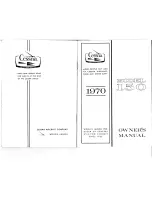
Caution! Accident risk!
Always keep within the recommended limits. Do not perform aerobatics or extreme
flying manoeuvres, such as spirals with "big ears". This will prevent accidents caused
by overloading the glider.
Deep stall
Various things can cause a paraglider to deep stall, e.g. shrinkage of the C and D lines as a result of
dampness or flying in the rain. The airflow from the front of the glider gradually breaks away towards
the back and the canopy sags, with the glider remaining upright. Paragliders are particularly
susceptible to deep stalls if the wing loading is too low.
C and D lines which are too short, for example, can often be recognised because launch behaviour
deteriorates.
You can recognise a deep stall because there is less flight noise than normal. In addition, your sink
rate will increase (4-5 m/s).
Remain in an upright position and push the A- and B-risers in the direction you are
flying, so as to shorten them by 5 to 10 cm.
If you have a speed system, simply use it to accelerate. After you have landed safely,
the length of the lines must be checked.
Caution! Accident risk when canopy is wet or in rain!
A wet canopy or flying in the rain increase the risk of stall. In these circumstances, you
will be outside of the normal operating limits of the paraglider. If you are unable to
avoid flying in the rain for any reason, you should observe the following:
1. during rain and after it has stopped, we strongly recommend that you continue
flying with slight acceleration (at least 30% or more),
2. in general, apply the brakes as little as possible,
3. do not use “big ears”,
4. the control travel will be reduced,
5. avoid making tight turns, particularly in your final approach. It is recommended
that you continue flying with slight acceleration even during this stage of your
flight, as long as conditions permit.
6. in any event, avoid undesirable positioning of the canopy and possible early stall
near the ground (and, therefore, release the speed bar slowly).
Recovery
Содержание Astral 6
Страница 1: ...ASTRAL 6 Manual Version January 22nd 2010...
Страница 2: ......
Страница 20: ...12 Notes Swing Flugsportger te GmbH An der Leiten 4 82290 Landsberied Germany www swing de...






































